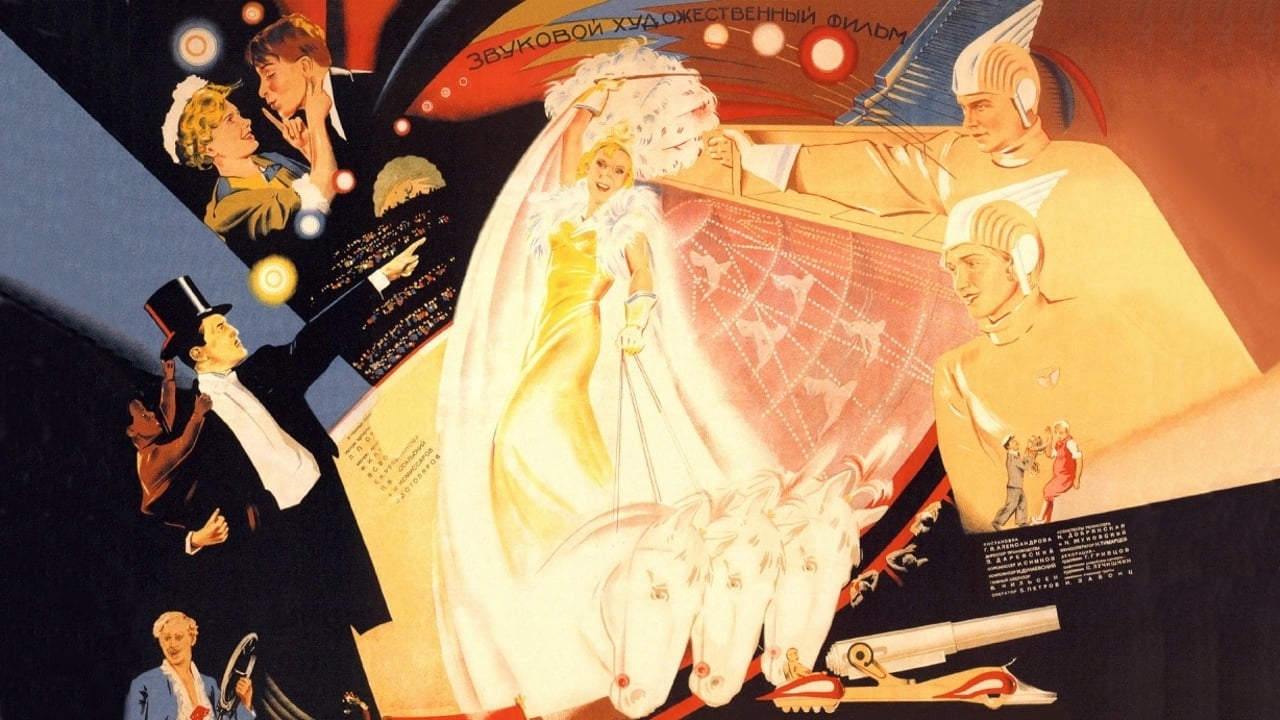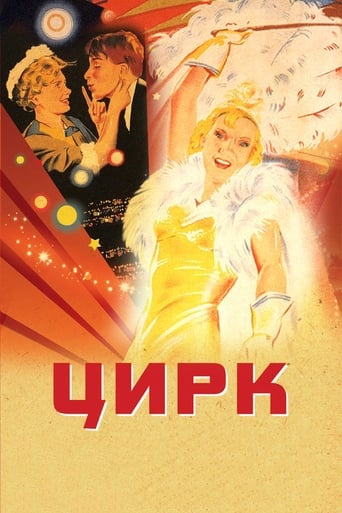Majorthebys
Charming and brutal
Lachlan Coulson
This is a gorgeous movie made by a gorgeous spirit.
Ortiz
Excellent and certainly provocative... If nothing else, the film is a real conversation starter.
Abegail Noëlle
While it is a pity that the story wasn't told with more visual finesse, this is trivial compared to our real-world problems. It takes a good movie to put that into perspective.
blacklotus123
It's easy as an American to view this film as a piece of propaganda, but I'm sure there are films from the same time period that are just as heavy handed, in fact some of the films being released today are just as self righteous and absurd. One thing that I found interesting was how this film tackled the issue of white women having black children, this certainly was not happening in America at the time. The film has a unique sense of humor that may not hold up well today, but it does have its moments, The Russian Superman was my favorite. It is also a good movie to compare to American musicals of the time such as 42nd Street, except with a Russian twist.
amikal
Circus which was written by Brigori Aleksandrov and was directed by Aleksandrov and I. Simkov was released in 1936. The movie which is a comedy/musical centers on a U.S.-Vaudeville dancer Marion Dixon on tour with her German manager Von Kneischitz in Mosocow. The woman's act entails her being shot from a canon and is a crowd favorite. When Marion begins to fall in love with the handsome Ivan Petrovich Martynov(Sergei Stolvarov) she falls in love with Moscow as well. When Marion decides she wants to remain in Moscow this does not make her German manager happy. Her manager insists that if she tries to stay in Moscow she will never be accepted after he tells everyone about her son who is half black. As the film progresses and comes to a close Marion confesses her love to Martynov and Kneischitz shows Marion's black child to the circus audience. While Kneischitz thinks he is going to ruin Marion, the opposite occurs. The Russian people accept the child. In the final scene they all march off in unity and happiness.The purpose of this film is clearly propaganda. The author seems to try and convey multiple messages in this film for that purpose. One message the author tries to convey in this film is that the Russian people are good and the German people are bad. This message is used as propaganda in order to create and increase nationalism amongst the Russian people during a time of conflict between Russia and Germany. Another message which the author tries to convey is not apparent until the end of the movie. This message is the portrayal of the Russian way of living, during the time of the Soviet Union, as the best way of living. The author conveys this message of equality and bliss amongst the Russian people for the purpose of propaganda in the final scenes.In my opinion the author and the Committee of Cinema Affairs want to portray Stalin and Lenin as Gods and Communism as a type of religion. This is reflected in what I believe to be the theme of the film; The Soviet way of living is the best way of living because all Russian people are equal and happy. This theme reflects the author's purpose of the film as propaganda.I liked some aspects of the film and some aspects I did not necessarily like but in a way I understood. The parts of the film that I did like were: the love story of Marion and Martynov, the humor associated with the acts of the circus clowns, and the conveyed message of equality and bliss. However some parts of the film may rub certain individuals the wrong way. For example: the way the black child is hidden from the public until the very end of the film. Although I understood that part of this use of a black child was to portray the existence of slavery in the United States during this time period. Another aspect of the film that may be offensive to some is the way that Americans(through the image of Marion) are portrayed as dumb and Russians superior. I would suggest this film to a friend because the film captures a person's interest, is controversial, and is funny. However this film is not for everyone, and I would mostly recommend it for the purpose of study in film or history, not pleasure.
psbarlo-1
If you are going to make a movie endorsing the actions of one of history's greatest villains, in this case Stalin, at least make it fun to watch! "Tsirk" is a funny, melodramatic, accessible movie that features several entertaining acts, such as the impromptu Lion Tamer, the dance on the cannon, and the communal ending. It is heartwarming to see an entire country represented as they sing a child to sleep, until you realize that the Yiddish Representatives were executed after the production. The running theme of confusion, over translation and ideologies, provided the movie with several humorous moments of error, and provided the movie with an honest subtext.Also, worth pointing out, is the movie's fearless attitude towards racism. Hollywood would hint at the problem, but rarely delve into it as much as "Tsirk" has.
sunlion
It`s funny to see Americans so picky about this movie, when Russians at than time and still are portrayed much worse in Hollywood productions. It`s either gangsters or drunk "comrades". Also I have to add that the famous singer Paul Robson was living some time in Soviet Russia and sent his son to Soviet high school. In later interview the son told BBC that it was the only time when he didn`t felt subhuman in his entire life. There`s the racism for you ! As for the Stalin - people didn`t know anything at that time and were just rebuilding the country that was finally theirs, so the jubilant scenes are absolutely rightful,they were supposed to gratify people for their immensely hard work and show what they have already achieved. Plus the march scenes are not a bit more silly than for example "water games" shot in Hollywood and featuring just diving, swimming an endless liters of colored water and smoke. I have to mention the actress in lead role - Orlova. She was a prime dancer of the Soviet cinema. Film features one shot that shows just how great her talent as an actress was. When she dances on the cannon, it`s closed with a thick glass and lit up from inside. The glass during the dance heated up, and when she sits down she actually sits on something like an oven ring. But she continues to sing !! You can only note the slight trepidation in her voice if you know about the accident, otherwise it`s seamless !Overall, this movie has to be taken along with the context and ability to be fair both ways. After all, Stalins face was used by filmmakers as a means to get their films through,so you can just peel that away as an ugly wrapping.

